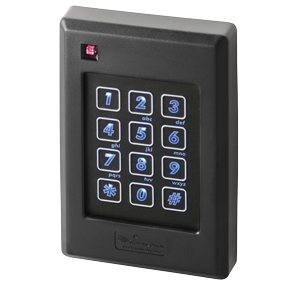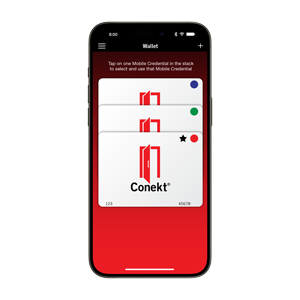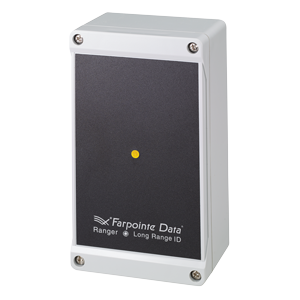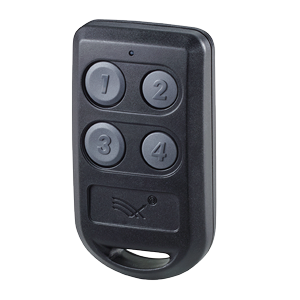
MOBILE AND LONG-RANGE DRIVE ACCESS CONTROL IDENTIFICATION IN THE TRANSPORTATION SECTOR
By Tom Piston
Southern Regional Sales Manager, Farpointe Data
Airports are among the busiest transportation hubs. Consider as an example, Dubai International Airport, International Air Transport Association airport code DXB. Today it’s the primary international airport serving Dubai, United Arab Emirates, and in 2023 was the world’s busiest airport by international passenger traffic. DXB handles nearly 100 million passengers a year. Even more amazing, it contributes a staggering $26.7 billion to the local Emirates economy—nearly 30% of the country’s total GDP—and gainfully employs more than 90,000 workers. With this size and scope, it’s clear that transportation hubs demand advanced electronic access control solutions meeting a wide variety of large and complex security requirements. As such, it’s no surprise these busy hubs are considering long-range identification and multi-factor mobile access as key components within their integrated security operations.
When asked about access control at airports, most of the public might comment about the readers often seen in the terminal at the jetway boarding bridge entrance. We’ve all seen aircrews badging in as they prepare the aircraft for a safe flight. However, access control readers can be found in many other locations around an airport. Another spot is the controls of the aircraft boarding bridge. An electronic access reader is often utilized to release and make available these controls to authorized operators only. Other spots include the baggage area, fuel depot, fire house, airport perimeter, Customs and control tower. The ‘Muffin Master’ Airport Receiving Station is a more unusual example and, like the boarding bridge, this piece of specialty equipment—which makes efficient disposal of waste from aircraft toilets—requires a trained and authorized technician to run it. Keep in mind, all these access points must be managed under a vigilant electronic access control system.
Due to heightened security necessities, access control readers in transport hubs often combine both a card reader and a keypad into a single integrated unit. These special keypad readers allow for 2-factor authentication, where neither a valid credential nor a PIN alone will trigger an access-granted transaction. Rather they must be used together—what one has and what one knows—resulting in a more secure solution. Keypad readers are available in 3×4 wall switch or 2×6 mullion-mount configurations. Many are engineered to be installed indoors or out. When selecting keypad readers, consider readers that support contactless smartcards and mobile access credentials. For durability, consider only keypads that make use of capacitive, non-mechanical, solid-state technology optimized for use with a finger. Next, for the best protection against weather and vandalism, only use keypad readers that are fully sealed with epoxy potting. Potting is a unique material that permanently seals out liquids, dust, grease and sand, from a reader’s internal electronics.
Transport hubs require efficient and secure identification credentials to maintain secure spaces and control access. These credentials normally need to be trusted and unique. They must show great resistance to having unauthorized copies made, known as cloning. Their communications need to be encrypted and secured against nefarious replay attacks. And often, these credentials will be asked to not only identify the user, but also provide a level of verification that they are who they claim to be. 13.56-MHz contactless smartcards have traditionally been used to meet these demanding requirements. However, limitations in read speed, range and flexibility demonstrate their drawbacks. Enter the digital alternative to physical cards and tags—the mobile access credential. Mobile credentials have some key benefits over their physical counterparts. For one, they often exist behind a smartphone’s security parameters, such as biometrics and keypad. Next, they often make use of the highest levels of encryption, assuring secure communications. And many are convenient, offering read ranges up to 15 feet (4.6 meters) or more.
With that said, many airports require even longer read ranges. Long-range, push-button transmitters are the choice here, where each individual button can be programmed to trigger a distinct operation. These reliable, non-traditional access credentials also make use of secure encryption and feature read ranges up to 200 feet (61 meters). Airport applications frequently include the opening of doors, gates and other portals from a significant distance, making them perfect opportunities to apply long-range transmitters.
Transport hubs, such as airports, are a challenging space for electronic access control. They include both traditional and non-traditional requirements in a large and complex security environment. Keypad readers, combining both a card reader and keypad into a single enclosure, and sealed with epoxy potting, are proving popular with aviation security specifiers. The security requirements in airports dictate high security credentials, such as those making use of NXP Semiconductors’ MIFARE® DESFire® EV3. However, the unique access requirements at airports are also driving consideration of non-traditional access credentials, such as mobile access credentials and long-range transmitters.
To learn more about access control identification for transportation applications, call Farpointe Data at +1-408-731-8700, or email .
 Tom Piston
Tom Piston
Southern Regional Sales Manager





